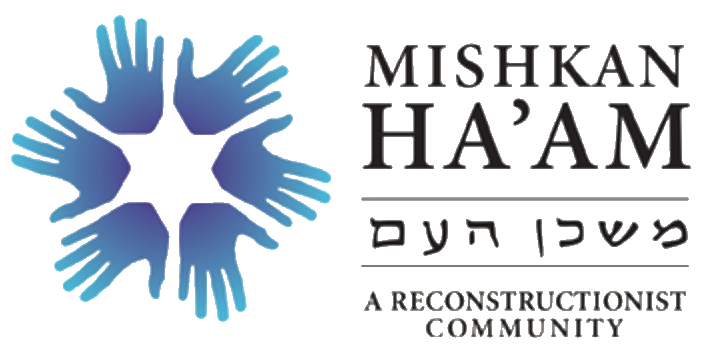Building Our Mishkan:
In the spring of 1997, we looked at our kids and realized they were getting to a certain age, and we knew that we wanted to impart to them a sense of Jewish identity within a community. We were seeking a way to have meaning, and not just form; a place where our kids — and we — could ask questions, challenge assumptions, and where religion would not be a rote thing. We couldn’t find this kind of Jewish community in Westchester.
The first sentence of our first press release asked, “Are you looking for a synagogue and haven’t found the right fit?” We were looking to create a Reconstructionist group that would be egalitarian, participatory, and open to varying viewpoints, and, joyously, we found others who were looking for the same thing!
Our first Shabbat service was at one of our homes; we didn’t have a rabbi, we crowded around a dining room table, ablaze with Shabbat candles, and we read from a homemade prayer booklet. It was a simple service, but it was transcendent — one of the most moving any of us had ever attended.
Over these eighteen years we have been blessed by the guidance of ten rabbinic leaders: Daniel, Marsha, Susan, Amita, Joshua, Jarah, Ben, Ezra, David and Megan. Each one has left an impression on us and who we are. But Mishkan Ha’am was not created by the skills of a rabbi; it is enhanced by those skills, guided by those skills, yes, but we are a community that creates itself.
Not having the same rabbi over the years has forced us to focus on what we actually want and how to achieve it through engagement with one another. We have always liked the passage in the Torah where everyone is invited to bring something to build the mishkan — and that’s us, each of us helping to build our community, reflecting our individual needs, desires, and skills. We’ve come as far as we have in 18 years entirely because of what we all have brought and continue to bring.
And that’s what Mishkan Ha’am has become — not a place where people just read and sit and stand, (although, the Great Redeemer knows, we sometimes do our share of it), but where we can talk about what it means to be Jewish and relate that to how we live our lives. Our services are a conversation among the Torah, the rabbi, and all of us in the room. We embrace a kind of unadorned wrestling, without pretension, connecting Jewish teachings to our everyday lives.
In particular, our B’nai Mitzvah services capture who we are by their individuality coupled with the continuity of Mishkan Ha’am’s own traditions. Our kids have their own voices and we want to hear them from the time they can vocalize. This culminates in their Bat or Bar Mitzvah when they read from the Torah and share with us their thoughts, ideas and challenges. We love and respect our kids and what they bring to us, and they know that.
We’re eighteen years old. As a work in progress, we have definitely evolved — through all our rabbis, members coming and going — and yet you always know when you are in a Mishkan Ha’am service. There is something that is definitely us. We are a “congurah” — a group with the aspirations of a congregation and the intimacy of a chavurah. We respond to our own expectations and desires and then work to realize them. Bigger places are less nimble at incorporating so many voices. But that’s our Mishkan.
—Ellen Tattelman and Joey Parnes, founding members (written in 2016)
Translation and meaning of Mishkan Ha’am:
In the “Book of Miracles” by Lawrence Kushner, his text highlights a connection to the name of our congregation, Mishkan Ha’am — which means the “tent of the people” or “sacred tent of the people” and the role we all have in building community.
“When the people of Israel wandered in the wilderness after leaving Egypt, they carried a portable temple called the mishkan, the wilderness shrine, or tabernacle.
When the work of the mishkan was finally completed, the Torah says, “the tabernacle was ‘one.’” One rabbi thought that this was an odd thing to say about a building.
Perhaps, he suggested, the Torah is not telling us something about the building but about its builders and how they worked.
Here’s what that rabbi suggested. While building the mishkan, everyone worked as a team. Each person, contributing only one small part, felt as important as every other person. After the mishkan was completed, they saw how their individual tasks fit together, as if one person had constructed the whole thing.
Realizing how they had depended on one another they understood that the place they built was ‘one.’ Even the person who made the Holy Ark itself realized that she was no more important than the person who made only the courtyard tent pegs.”
And for those of us who have been building this community, Mishkan Ha’am, we feel the same way.
~ Leslie Lieman & Micah Sifry, almost founding members and recent Co-Presidents

